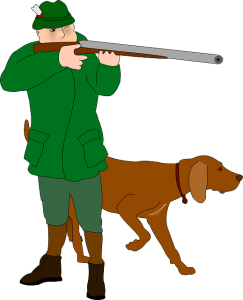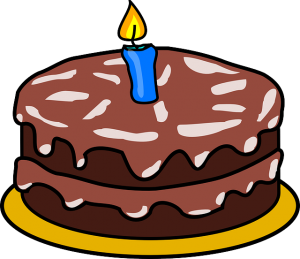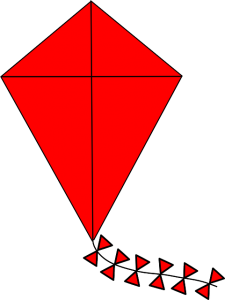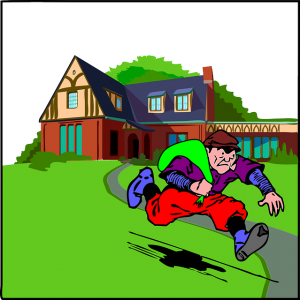1.9: Canada's Tallest Tree
- Page ID
- 47728
\( \newcommand{\vecs}[1]{\overset { \scriptstyle \rightharpoonup} {\mathbf{#1}} } \)
\( \newcommand{\vecd}[1]{\overset{-\!-\!\rightharpoonup}{\vphantom{a}\smash {#1}}} \)
\( \newcommand{\id}{\mathrm{id}}\) \( \newcommand{\Span}{\mathrm{span}}\)
( \newcommand{\kernel}{\mathrm{null}\,}\) \( \newcommand{\range}{\mathrm{range}\,}\)
\( \newcommand{\RealPart}{\mathrm{Re}}\) \( \newcommand{\ImaginaryPart}{\mathrm{Im}}\)
\( \newcommand{\Argument}{\mathrm{Arg}}\) \( \newcommand{\norm}[1]{\| #1 \|}\)
\( \newcommand{\inner}[2]{\langle #1, #2 \rangle}\)
\( \newcommand{\Span}{\mathrm{span}}\)
\( \newcommand{\id}{\mathrm{id}}\)
\( \newcommand{\Span}{\mathrm{span}}\)
\( \newcommand{\kernel}{\mathrm{null}\,}\)
\( \newcommand{\range}{\mathrm{range}\,}\)
\( \newcommand{\RealPart}{\mathrm{Re}}\)
\( \newcommand{\ImaginaryPart}{\mathrm{Im}}\)
\( \newcommand{\Argument}{\mathrm{Arg}}\)
\( \newcommand{\norm}[1]{\| #1 \|}\)
\( \newcommand{\inner}[2]{\langle #1, #2 \rangle}\)
\( \newcommand{\Span}{\mathrm{span}}\) \( \newcommand{\AA}{\unicode[.8,0]{x212B}}\)
\( \newcommand{\vectorA}[1]{\vec{#1}} % arrow\)
\( \newcommand{\vectorAt}[1]{\vec{\text{#1}}} % arrow\)
\( \newcommand{\vectorB}[1]{\overset { \scriptstyle \rightharpoonup} {\mathbf{#1}} } \)
\( \newcommand{\vectorC}[1]{\textbf{#1}} \)
\( \newcommand{\vectorD}[1]{\overrightarrow{#1}} \)
\( \newcommand{\vectorDt}[1]{\overrightarrow{\text{#1}}} \)
\( \newcommand{\vectE}[1]{\overset{-\!-\!\rightharpoonup}{\vphantom{a}\smash{\mathbf {#1}}}} \)
\( \newcommand{\vecs}[1]{\overset { \scriptstyle \rightharpoonup} {\mathbf{#1}} } \)
\( \newcommand{\vecd}[1]{\overset{-\!-\!\rightharpoonup}{\vphantom{a}\smash {#1}}} \)
\(\newcommand{\avec}{\mathbf a}\) \(\newcommand{\bvec}{\mathbf b}\) \(\newcommand{\cvec}{\mathbf c}\) \(\newcommand{\dvec}{\mathbf d}\) \(\newcommand{\dtil}{\widetilde{\mathbf d}}\) \(\newcommand{\evec}{\mathbf e}\) \(\newcommand{\fvec}{\mathbf f}\) \(\newcommand{\nvec}{\mathbf n}\) \(\newcommand{\pvec}{\mathbf p}\) \(\newcommand{\qvec}{\mathbf q}\) \(\newcommand{\svec}{\mathbf s}\) \(\newcommand{\tvec}{\mathbf t}\) \(\newcommand{\uvec}{\mathbf u}\) \(\newcommand{\vvec}{\mathbf v}\) \(\newcommand{\wvec}{\mathbf w}\) \(\newcommand{\xvec}{\mathbf x}\) \(\newcommand{\yvec}{\mathbf y}\) \(\newcommand{\zvec}{\mathbf z}\) \(\newcommand{\rvec}{\mathbf r}\) \(\newcommand{\mvec}{\mathbf m}\) \(\newcommand{\zerovec}{\mathbf 0}\) \(\newcommand{\onevec}{\mathbf 1}\) \(\newcommand{\real}{\mathbb R}\) \(\newcommand{\twovec}[2]{\left[\begin{array}{r}#1 \\ #2 \end{array}\right]}\) \(\newcommand{\ctwovec}[2]{\left[\begin{array}{c}#1 \\ #2 \end{array}\right]}\) \(\newcommand{\threevec}[3]{\left[\begin{array}{r}#1 \\ #2 \\ #3 \end{array}\right]}\) \(\newcommand{\cthreevec}[3]{\left[\begin{array}{c}#1 \\ #2 \\ #3 \end{array}\right]}\) \(\newcommand{\fourvec}[4]{\left[\begin{array}{r}#1 \\ #2 \\ #3 \\ #4 \end{array}\right]}\) \(\newcommand{\cfourvec}[4]{\left[\begin{array}{c}#1 \\ #2 \\ #3 \\ #4 \end{array}\right]}\) \(\newcommand{\fivevec}[5]{\left[\begin{array}{r}#1 \\ #2 \\ #3 \\ #4 \\ #5 \\ \end{array}\right]}\) \(\newcommand{\cfivevec}[5]{\left[\begin{array}{c}#1 \\ #2 \\ #3 \\ #4 \\ #5 \\ \end{array}\right]}\) \(\newcommand{\mattwo}[4]{\left[\begin{array}{rr}#1 \amp #2 \\ #3 \amp #4 \\ \end{array}\right]}\) \(\newcommand{\laspan}[1]{\text{Span}\{#1\}}\) \(\newcommand{\bcal}{\cal B}\) \(\newcommand{\ccal}{\cal C}\) \(\newcommand{\scal}{\cal S}\) \(\newcommand{\wcal}{\cal W}\) \(\newcommand{\ecal}{\cal E}\) \(\newcommand{\coords}[2]{\left\{#1\right\}_{#2}}\) \(\newcommand{\gray}[1]{\color{gray}{#1}}\) \(\newcommand{\lgray}[1]{\color{lightgray}{#1}}\) \(\newcommand{\rank}{\operatorname{rank}}\) \(\newcommand{\row}{\text{Row}}\) \(\newcommand{\col}{\text{Col}}\) \(\renewcommand{\row}{\text{Row}}\) \(\newcommand{\nul}{\text{Nul}}\) \(\newcommand{\var}{\text{Var}}\) \(\newcommand{\corr}{\text{corr}}\) \(\newcommand{\len}[1]{\left|#1\right|}\) \(\newcommand{\bbar}{\overline{\bvec}}\) \(\newcommand{\bhat}{\widehat{\bvec}}\) \(\newcommand{\bperp}{\bvec^\perp}\) \(\newcommand{\xhat}{\widehat{\xvec}}\) \(\newcommand{\vhat}{\widehat{\vvec}}\) \(\newcommand{\uhat}{\widehat{\uvec}}\) \(\newcommand{\what}{\widehat{\wvec}}\) \(\newcommand{\Sighat}{\widehat{\Sigma}}\) \(\newcommand{\lt}{<}\) \(\newcommand{\gt}{>}\) \(\newcommand{\amp}{&}\) \(\definecolor{fillinmathshade}{gray}{0.9}\)
Learning Goals
In this chapter, you will learn to:
- Hear, read, and write words with long vowels
- Copy short sentences
- Read common sight words in a paragraph
- Answer questions about a story
- Give sentence answers to questions
Talk About It
- Have you ever gone for a hike? Where?
- Do you have a favourite forest to walk in?
Picture Dictionary | ||
Use the pictures to help you figure out the words. | ||
 |  |  |
| hunt | Vancouver Island | logger |
 |  |  |
| path | forest | tall |
 |  |  |
| awe | park | risk |
 | ||
| down | ||
Practice reading these words without the pictures. | ||||
| forest | awe | down | hunt | tall |
| risk | Vancouver Island | logger | park | path |
Word Skills
Match the word to the picture.
| rake | dime | nose | cake |
| nine | home | rice | gate |
 |  |  |
| 1. _____________ | 2. _____________ | 3. _____________ |
 |  |  |
| 4. _____________ | 5. _____________ | 6. _____________ |
 |  | |
| 7. _____________ | 8. _____________ |
You will see these words in the story. Practice reading them.
| name | like | made |
| take | more | save |
Read the sentences. Then copy them. Use upper case letters, periods, question marks, and exclamation marks correctly. |
| Meg has nine cats. |
 |
| Lock the gate. |
 |
| What is your name? |
 |
| Save me! |
 |
| Can I have more cake? |
 |
Use Your Reading Skills
Listen to Canada’s Tallest Tree. Then read Canada’s Tallest Tree in BC Reads: Adult Literacy Fundamental English – Reader 1.
An audio element has been excluded from this version of the text. You can listen to it online here: opentextbc.ca/abealf1/?p=65
Check Your Understanding
Answer these questions. Use the underlined words to help you form a sentence.
1. Where is Canada’s tallest tree?
___________________________________________________
2. How tall is Canada’s tallest tree?
___________________________________________________
3. Who was the first person to find Canada’s tallest tree?
___________________________________________________
4. What did the forest with Canada’s tallest tree become?
___________________________________________________
5. What are many of BC’s old forests at risk of?
___________________________________________________
Writing Task
Think of a time something in nature filled you with awe, or made you feel amazed. Tell the story to your instructor. Your instructor will write down your words. Then copy your story into your notebook.
When you are done, read your story.
- Did you begin each sentence with an upper case letter?
- Did you use an upper case letter at the beginning of a person’s name?
- Did you end each sentence with a period or question mark?
- Are you missing any words?
Answer Key | |
| Word Skills | |
| QUESTION | ANSWER |
| 1 | rice |
| 2 | dime |
| 3 | gate |
| 4 | home |
| 5 | rake |
| 6 | nose |
| 7 | nine |
| 8 | cake |
| Check Your Understanding | |
| QUESTION | ANSWER |
| 1 | Canada’s tallest tree is on Vancouver Island. |
| 2 | Canada’s tallest tree is 314 feet tall. |
| 3 | A logger was the first person to find Canada’s tallest tree. |
| 4 | The forest with Canada’s tallest tree is now a park. |
| 5 | Many of BC’s old forests are at risk of being cut down. |
Attributions
See the Attributions page near the end of this book.








